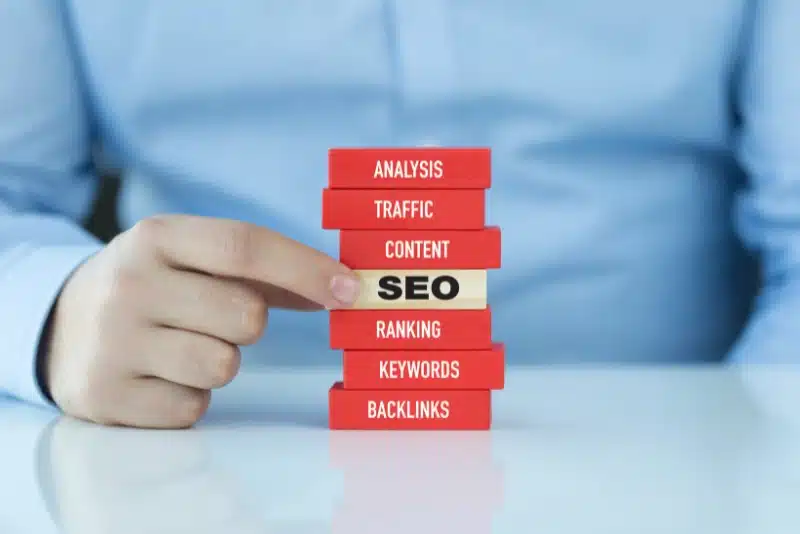Local SEO for small businesses is no longer optional. It’s the difference between a packed café and an empty room.
It started with silence.
No pings. No bookings. No walk-ins.
A café owner in Austin thought her Wi-Fi was working. But the phones were on, and the espresso machine, too. So why did her morning rush never show up?
Had she missed a local holiday? Did she offend someone online? Or was her coffee suddenly terrible?
She Googled her shop. Nothing.
Not in the local pack. Not in Maps. Not even in “cafés near me.”
Only one block away, her competitor—half the charm, double the price—sat at the top of every result. They had a full house.
So what happened?
Her business didn’t close. It just stopped showing up to Google, to locals, to tourists, and to everyone else.
Local SEO for small businesses isn’t some marketing extra. It’s your visibility. Your location. Your future.
Still think it’s “nice to have”? Ask yourself: If someone searched your service in your neighborhood right now… Would they find you—or someone else?
In 2025, it’s not about being the best. It’s about being visible.
So, how do you show up where it matters? How do you stay findable in a world ruled by algorithms?
That’s what this post answers. Are you ready to stop disappearing?
1. More Effort, but Still No One Finds You?
The Issue: Lack of Clarity. Missed Opportunities. Relevance.
You’re posting. You’re updating. Still invisible? That’s a red flag.
Google doesn’t reward busy work. It rewards relevance, reputation, and hyperlocal trust.
According to Oleg Levitas (Forbes, 2025), visibility now demands real-world ties and clarity.
- 5-star reviews aren’t enough—Google wants stories and details.
- “Near me” voice searches have exploded. Are you answering them?
- Generic content dies fast. Neighborhood-specific pages rise.
- Community mentions now outweigh backlinks.
Ask yourself: Does your site mention your street, events, and real customers? If not, you’re invisible by design. Want to fix that?
The Fix: Sharpened Focus. Specificity. Local Ties.
You must focus on local SEO marketing strategies. How? Start with local visibility. Here’s what works:
- Verify and optimize your Google Business Profile (GBP).
- NAP consistency—same Name, Address, Phone (NAP) across all platforms.
- Target local keywords tied to your services and city.
- Earn local backlinks from chambers, blogs, and digital press.
- Pitch local stories to regional outlets—trust builds locally.
- Collect and reply to reviews regularly.
Google ranks by relevance, distance, and prominence. Local SEO hits all three.
📍Most service searches have local intent—don’t ignore the map pack.
2. More Searches, but Competitors Rank Higher Every Time?
The Challenge: Backlinks. User Experience. Authority.
You’re optimized. Yet, competitors outrank you. Why?
Backlinks, mobile responsiveness, and user engagement are pivotal. Neglecting these local SEO ranking factors hampers your search rankings.
- Backlinks Matter: Top-ranking pages have 3.8 times more backlinks than lower-ranked ones.
- Mobile Optimization: 63% of searches occur on mobile devices; ensure your site is mobile-friendly.
- User Engagement: Google’s algorithm favors sites with high user engagement and relevance.
The Approach: Strengthen Your Foundation. Quality Over Quantity.
To climb rankings:
- Acquire Quality Backlinks: Focus on relevant, authoritative sources.
- Enhance Mobile Experience: Implement responsive design and fast loading times.
- Increase User Engagement: Create compelling, relevant content that retains visitors.
Implementing these strategies can significantly improve your local search performance.
3. More Info Online, but Still Missing on Maps?
The Roadblock: Inaccurate Data. Unverified Listings. Visibility Gap.
You’re online but absent from Google Maps. Why?
An unverified or incomplete GBP keeps you invisible.
- Incomplete Profiles: Joe Estrada agrees that business profiles with missing information are less likely to appear in local searches.
- Customer Trust: Inaccurate or sparse profiles reduce credibility with potential customers.
The Solution: Proper Setup. Consistency. Engagement.
Claim your profile, fill it out fully, and stay consistent.
- Accurate Info: Ensure your name, address, and phone number match all platforms.
- High-Quality Images: Add clear images of your business to boost trust.
- Regular Updates: Keep information fresh and relevant.
- Engage with Reviews: Respond to feedback to show you’re listening.
A well-maintained profile makes your business visible and trustworthy.
